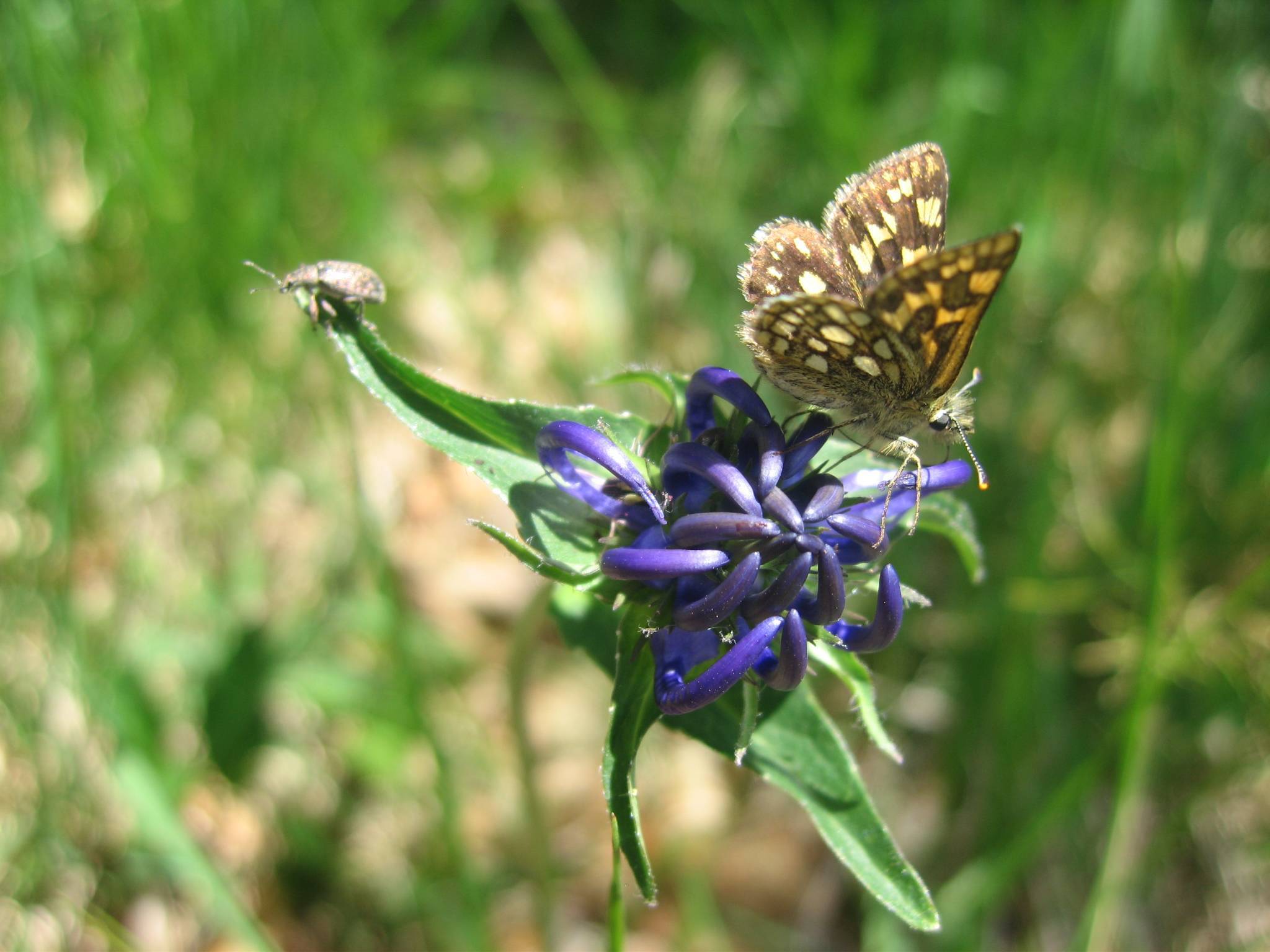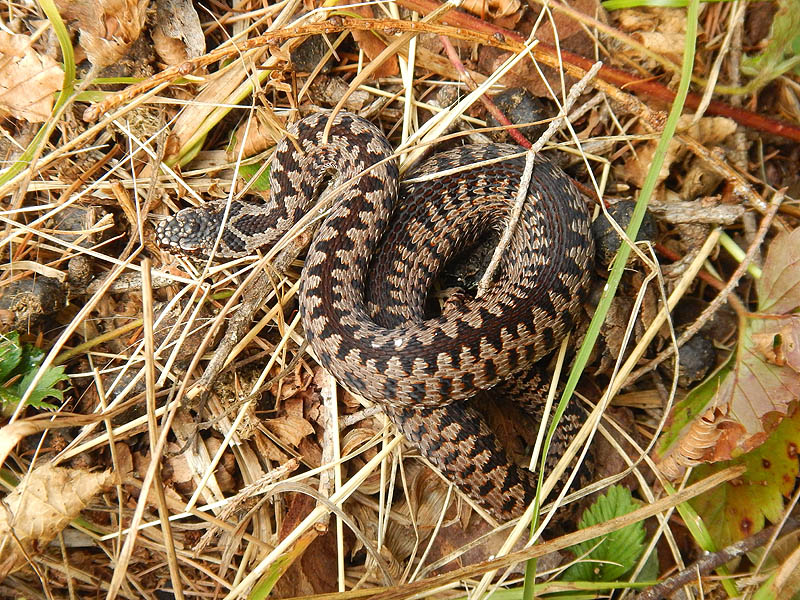Butterflies are probably the most beautiful insects thanks to the infinite variety of patterns and colors that characterize the wings, the most visible part of their body. The flight is their “normal” way to move: some are quick and rapid, others are slow and heavy. The legs are little used for locomotion and they essentially serve to cling to the substrate to rest or to feed.
The mouth apparatus consists of a sort of proboscis which suck the liquid substances that constitute their food. When not in use, the proboscis is coiled under the head; in many species it reaches a remarkable development, such as to allow the exploration of the deepest corollas.
Alighting on flowers, butterflies play a very important role in pollination; they prefer to rest on flowers or among the plants eaten by caterpillars, but they can also be observed on the trees trunks and branches, among stones, in the farmyards and in the houses courtyards.
Normally butterflies are divided into two groups, diurnal and nocturnal; in fact many species are active during the middle of the day, others have crepuscular habits, some move only in the morning, while others prefer total darkness. From the scientific point of view, however, this division is not very precise; in fact there are night species that fly also during the day (such as Zigene) and diurnal ones that also move at night. A difference between these two groups is given by the way they keep the wings when resting: the “daytime” butterflies fold back them one against the other perpendicularly to the body while the night species leave them along the abdomen.
They lay eggs from which derive the larvae, commonly called caterpillars. These are equipped with strong mandibles used to eat plants on which they also live. Some gnaw the whole leaf, others make holes. Some caterpillars live in the wood, where they dig long tunnels. After a certain period of time (variable from species to species), caterpillars form a chrysalis and then (always after a time that varies from species to species) they transform into real butterflies. In the world there are about 140,000 known species of butterflies: the most colorful and even largest (the greatest wingspan reaches 32 cm) live in tropical and subtropical countries. In Europe they are known 6,000 species of butterflies, of which only 380 are classified as diurnal. The largest butterfly of our continent is the Saturnia pyri (pear tree Saturnia or Great Pavonia), a moth that can reach a wingspan of 14 cm. Saturnia pyri (Saturnia del pero o Pavonia maggiore), una farfalla notturna che può raggiungere i 14 cm di apertura alare.
Two specimens of Parnassius apollo. It is a typical medium-sized mountain butterfly (60/75 mm of wingspan); it lives in the grasslands of mountain environments and it alights happily on thistles. The species is found between June and August and it is characterized by a slow and heavy flight. It belongs to the Papilionidae family (swallowtail butterflies), which includes also two other beautiful butterflies: the Papilio macaon (machaon), which also lives in the mountains, and the Scarce Swallowtail (Iphiclides), which prefers hilly areas with chalky soil. The Parnassius apollo has several shapes and subspecies: the specimen in the photo on the right shows red eye-spots, the one in the left picture the orange eye-spots (less common).

Parnassius apollo

Parnassius apollo
A colorful example of Aglais urticae (Vanessa nettles), a medium-sized butterfly (40-50 mm of wingspan) which lives in the clearings, on the edge of forests, grasslands, fields and even in gardens, both in the valleys and in the mountains, where it goes up to 3000 meters. Its name comes from the fact that the caterpillars grow on nettles (see photo on the right). It belongs to the Nymphalidae family (Nymphalidae), which also includes other butterflies quite common in our meadows as the Red Admiral (Vanessa atalanta), the Peacock Butterfly (Inachis io) and Antiope (Nimphalis antiope).

Vanessa Delle Ortiche – Aglais urticae

Vanessa Delle Ortiche – Aglais urticae
Another very common butterfly in our mountains: the Fabriciana adippe or niobe. It is a medium-sized butterfly (42/55 mm of wingspan) easy to find along the forest trails and glades, often resting together with other similar species on thistles. It also belongs to the Nymphalidae family (Nymphalidae).

Fabriciana adippe – Niobe

Fabriciana adippe – Niobe












